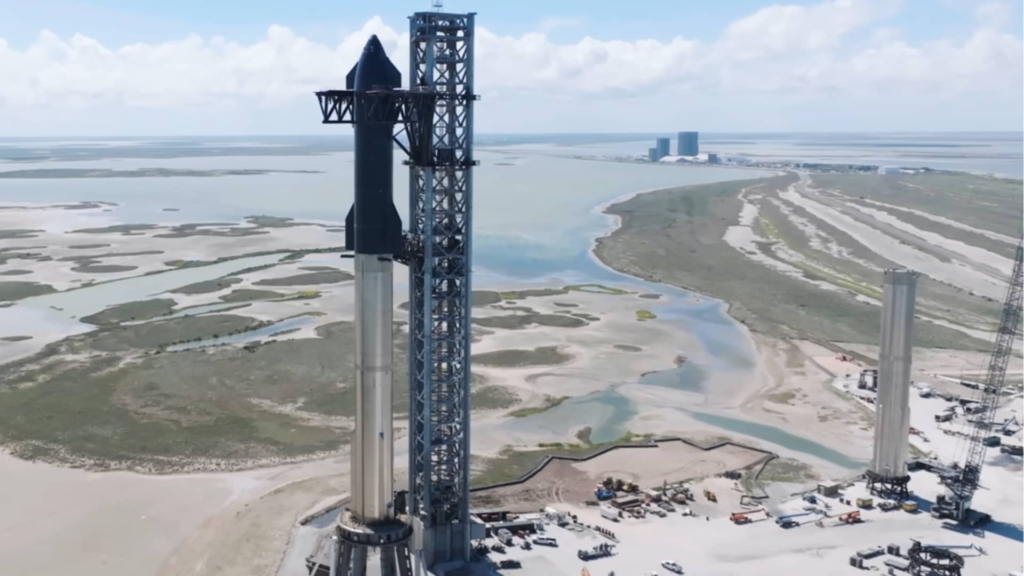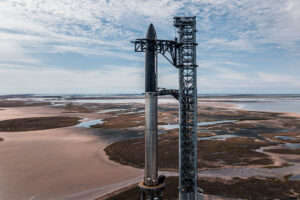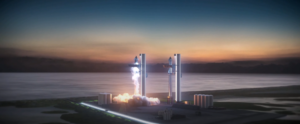
Can SpaceX Continue To Afford Starship Development?
Work on the Starship program has been going on for years as it enters its busiest moment yet. While the progress that’s been made has been quite impressive, it has cost the company a lot of money. This brings up questions regarding the source of funding, the future expenses of this program, and how it compares to other large space programs within the industry.
By the end of this year, it’s estimated that SpaceX will have spent $5 billion on the entire program. At the same time, the company expects to spend even more as full test flights begin and production increases. Right now teams at SpaceX are continuing to work on the pad damage and the installation of a new water-cooled steel plate. New information from Musk and SpaceX suggests that this process is coming along very well.
Developing and launching rockets is not a cheap endeavor and will end up costing an immense amount of money practically no matter the program. Here I will go more in-depth into SpaceX’s Starship finances, recent progress toward the second integrated test flight, what to expect in the coming months, and more.
The Total Starship Cost

About one week ago SpaceX filed a motion with the federal district court in the District of Columbia requesting to be added as a defendant in the lawsuit filed by several environmental groups against the Federal Aviation Administration. According to court filings and comments by the company’s chief executive, the $5 billion total program cost was provided.
More specifically, Bret Johnsen, chief financial officer at SpaceX commented that since a 2014 “record of decision” by the FAA, allowing SpaceX to develop launch facilities at Boca Chica, “SpaceX has invested more than $3 billion into developing the Boca Chica launch facility and Starship/Super Heavy launch system.” In addition to this $3 billion dollar number, recently during a Twitter discussion with Musk, he pointed out that the company was going to spend around $2 billion this year alone on Starship. He also made it clear that they didn’t expect to need any outside funding to support these costs.
While impressive this is a steep increase over the previous years which makes sense based on the progress. Around 5 years ago is when we started to see serious development and construction at Boca Chica. These initial years probably cost a fraction of what the company is spending now with the mass manufacturing and additions being made to the site. This being said, 2023 is meant to be the year that Starship reaches orbit for the first time. Currently, Starship is not making any money and instead just taking in massive amounts. Until it’s reliably flying this will be the case.
Back in 2021, Musk warned SpaceX employees that unless Starship could begin regular flights in 2022 to launch new, larger Starlink satellites, the company might go bankrupt. While Elon’s timeline is often a bit ambitious, these comments and concerns shouldn’t be fully dismissed. Right now the company is in a good position but there is a lot riding on the coming months with the second launch and the FAA lawsuit.
In this case, the SpaceX chief financial Officer outlined details of the consequences of any delay in launches caused by the suit. That includes nearly $1 billion in milestone payments on its NASA Human Landing System award linked to the first orbital launch and subsequent steps, which include a demonstration of in-space propellant transfer, an uncrewed lunar landing and crewed landing. Neither the agency nor SpaceX have previously outlined the schedule of milestone payments on its $2.9 billion award for Starship lander development for the Artemis 3 mission.
He also highlighted that SpaceX has invested billions into its Starlink satellite broadband constellation, and would be harmed if it cannot launch its larger “V2” satellites that require Starship. He said “hundreds of thousands of people” have placed deposits for service but are waiting until those larger satellites can be launched to have sufficient capacity to serve them.
As far as progress, yesterday Elon tweeted saying, “Major launchpad upgrades should be complete in about a month, then another month of rocket testing on pad, then flight 2 of Starship” If possible, a second integrated flight test in only around 2 to 3 months would be very impressive from the company. As we know the next Starship test article features a host of upgrades and in some cases significant design changes hoping to alter the results of this flight. However, it always comes back to money and the cost to continue developing and launching a next generation rocket.
Program Cost Comparison

While $5 billion is a lot of money, when compared to other programs it seems like a steal. The Space Launch System rocket under development by NASA for example has cost a lot more than originally planned. In a recent report from the NASA Office of Inspector General they commented that “As a result of the cost and schedule increases under these four contracts, we calculate NASA will spend $13.1 billion through 2031 on boosters and engines, which includes $8.6 billion in current expenditures and obligations and at least $4.6 billion in future contract obligations. Looking more broadly, the cost impact from these four contracts increases our projected cost of each SLS by $144 million through Artemis IV, increasing a single Artemis launch to at least $4.2 billion”
Not only this but before the first launch of SLS, NASA received more than $20 billion from Congress since 2011 for SLS development and related activities. Granted, the agency and SpaceX have a very different approach to space launch. The first launch of SLS was successful but it still cost much more than the agency had expected.
Focusing back on Starship, as partially mentioned prior, delays could have a very negative financial impact which is the current concern thanks to the new lawsuits. Here, SpaceX is set to join the Federal Aviation Administration as a co-defendant to fight a lawsuit brought by environmental groups following the company’s first test flight of Starship, which ended in a mid-flight explosion last month. In a motion filed Friday in court, SpaceX requested that federal judge Carl Nichols allow the company to join the FAA as a defendant against environmental and cultural-heritage nonprofit groups that sued the aerospace regulator earlier this month.
The plaintiffs “do not oppose” the company’s intervention, per the filings. Jared Margolis, a senior attorney with the Center for Biological Diversity and lead counsel for the plaintiffs, said it’s “standard and expected for the applicant to intervene in a case where their permit is at issue.” The groups suing the FAA alleged that the agency should have conducted a more in-depth environmental study on the likely impacts of SpaceX activity before allowing the company to launch the world’s largest rocket, Starship, from its Starbase facility. If the Court were to rule in Plaintiffs’ favor, the FAA’s decision could be set aside, and further licensing of the Starship/Super Heavy Program could be significantly delayed, causing severe injury to SpaceX’s business,” the company wrote.
Ideally, the evidence and extensive environmental preparation completed by the company prior are enough to win the case. When looking at SpaceX’s finances, it usually comes back to Starlink satellites. Starship is crucial to the future of the company’s Starlink satellite internet business, which has over 1.5 million customers. Bret Johnsen noted that “SpaceX has invested billions of dollars into Starlink” to date. Musk has previously highlighted the interdependence of those two businesses, with Johnsen further reiterating that SpaceX needs Starship flying in order to launch its second generation, or “V2,” Starlink satellites.
“Without Starship … not only will SpaceX be harmed financially by its inability to launch v.2 satellites, but also hundreds of thousands of people … are waiting until the Starlink constellation is upgraded and can serve them,” Johnsen wrote. Lastly, Johnsen pointed out that losing the lawsuit would cause the company to “substantially reduce” investment in its Starbase facility, which would harm its interests, as well as local employees and communities. With all this in mind, it puts in perspective the true cost of this program. Right now things are going well and SpaceX is well on its way toward the second test flight. However, there are a few bumps along the way that could severely impact the company’s progress depending on how they play out.
On the bright side, relative to most rockets, Starship is extremely affordable and is trying to have a very low cost per launch. Right now is going to be one of the more expensive moments within the program as they develop new launch prototypes and destroy infrastructure while testing. If the company can get through this stage and get Starship launching consistently, a lot of if any concerns related to money should be put on the back burner.
Conclusion
SpaceX estimates they are only around 2 to 3 months away from the second integrated test flight of Starship. Pad repairs are going well and the installation of a massive water-cooled steel plate is not far from completion. While this year will be one of the most expensive for the program, they are on track to reach orbit. We will have to wait and see how it progresses and the impact it has on the space industry.



